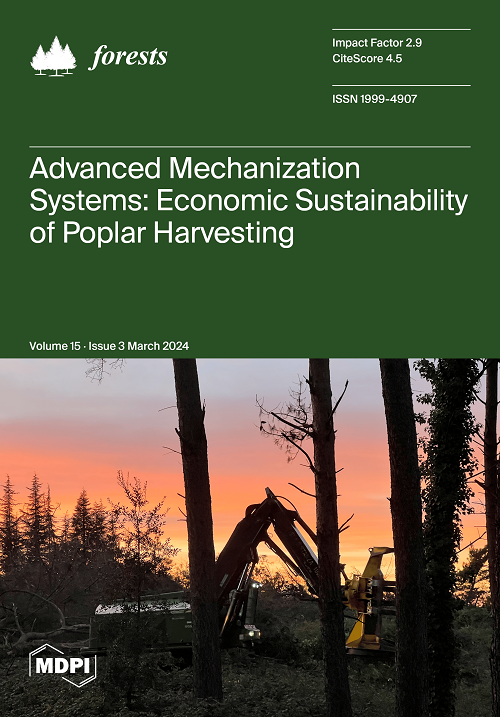考察城市公园绿地的空间模式、供需关系和驱动机制:中国案例研究
IF 2.5
2区 农林科学
Q1 FORESTRY
引用次数: 0
摘要
公园绿地是城市公共基础设施的重要组成部分,如何评估和优化城市公园绿地(UPGS)的错配成为当前学术界和产业界研究的重点。本文以我国 286 个城市为例,利用空间集群和波士顿咨询公司矩阵分析了 2010-2020 年城市公园绿地的聚集规律和变化模式,引入空间错配模型分析了其供需与 GDP、人口的匹配情况,并采用 Geodetector 分析了影响因素。研究结果表明:(1)中国 UPGS 的演变长期呈现 "金字塔 "形态,即有限绿色城市 > 发展中绿色城市 > 稳定绿色城市 > 蓬勃绿色城市,表现出沿海与内陆地区梯度差异、部分地区区块聚集的空间特征。(2)UPGS 的供需错配相对稳定,供给错配类型以负匹配为主,需求错配类型以正匹配为主。供需错配的贡献率同样呈现出从沿海向内陆逐渐降低、部分地区区块聚集的空间格局。(3)五类因素对 UPGS 起着不同的驱动作用,社会发展仍然是弱因素,强因素从城市基础设施转向建设用地规模。交互检测以双线性增强为主,超交互因子由第三产业产值、人口城镇化率向地方一般公共预算教育支出转变。(4)基于中国 UPGS 供需不匹配的现状,将 286 个城市划分为四种类型,即智能收缩区、智能增长区、现状区和叠加政策区,并提出了相应分区的差异化发展建议。本文构建了大尺度 UPGS "演化模式+供需匹配+驱动因素+政策分区 "的应用框架,将有效提升其在全国范围内的资源有效配置。本文章由计算机程序翻译,如有差异,请以英文原文为准。
Examining the Spatial Mode, Supply–Demand Relationship, and Driving Mechanism of Urban Park Green Space: A Case Study from China
Park green space is a big part of public infrastructure in cities, and how to evaluate and optimize the mismatch of urban park green space (UPGS) has become the focus of current research in academia and industry. Taking China’s 286 cities as an example, this paper used the spatial cluster and Boston Consulting Group Matrix to analyze the aggregation laws and changing modes of UPGS from 2010 to 2020, introduced the spatial mismatch model to analyze the matching of its supply and demand with GDP and population, and adopted the Geodetector to analyze the influencing factors. The findings: (1) The evolution of UPGS in China had long been characterized by a “pyramidal” pattern, i.e., limited green cities > developing green cities > steady green cities > booming green cities, exhibiting the spatial characteristics of gradient differences between the coasts and inland areas, and the aggregation of blocks in some areas. (2) The supply and demand mismatches of the UPGS were relatively stable, with negative matching being the main supply mismatch type, and positive matching being the main demand mismatch type. The contribution of supply and demand mismatches similarly showed a spatial pattern of a gradual decrease from the coast to inland and the aggregation of blocks in some areas. (3) Five types of factors played different driving roles on UPGS, with social development remaining a weak factor, and the strong factor switching from urban infrastructure to construction land scale. The interaction detection was dominated by a bilinear enhancement, with super-interaction factors changing from an output value of the tertiary industry and population urbanization rate to education expenditure in local general public budgets. (4) Based on the mismatch between the supply and demand for UPGS in China, 286 cities were classified into four types, namely a smart shrinking zone, smart growing zone, status quo zone, and overlay policy zone, and differentiated development proposals for the corresponding zoning were put forward. This paper constructed an application framework of “evolution pattern + supply demand match + driving factors + policy zoning” for UPGS at a large scale, which will effectively enhance the effective allocation of its resources across the country.
求助全文
通过发布文献求助,成功后即可免费获取论文全文。
去求助
来源期刊

Forests
FORESTRY-
CiteScore
4.40
自引率
17.20%
发文量
1823
审稿时长
19.02 days
期刊介绍:
Forests (ISSN 1999-4907) is an international and cross-disciplinary scholarly journal of forestry and forest ecology. It publishes research papers, short communications and review papers. There is no restriction on the length of the papers. Our aim is to encourage scientists to publish their experimental and theoretical research in as much detail as possible. Full experimental and/or methodical details must be provided for research articles.
 求助内容:
求助内容: 应助结果提醒方式:
应助结果提醒方式:


